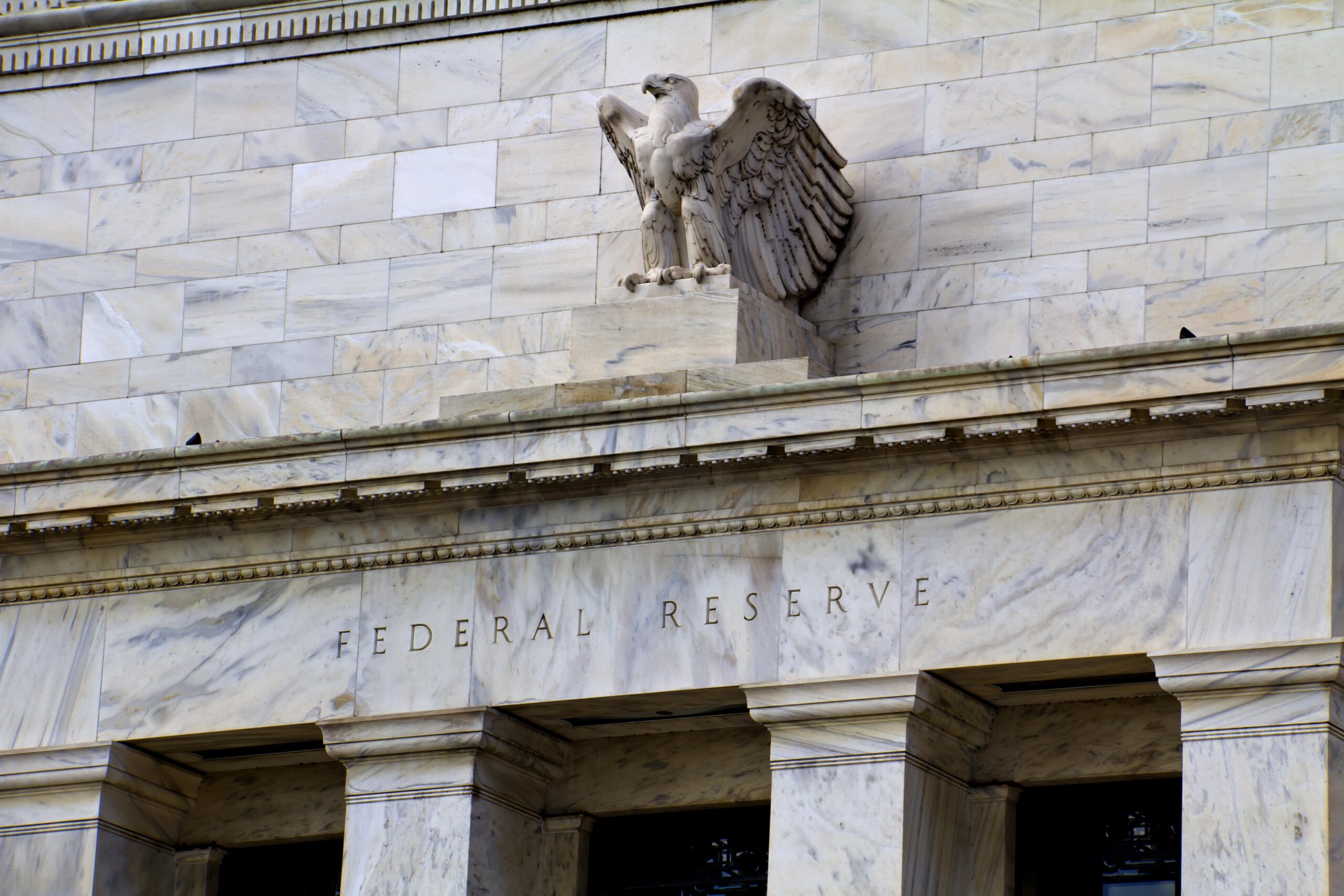
The information provided is based on the published date.
Key takeaways
- The US economy added 216,000 jobs in December
- December was the best month for job gains since September after downward revisions
- Steady job gains in the range of 150,000-250,000 are a positive sign for the economy and inflation
- The Fed may still cut rates if inflation stays in the mid-2% range despite steady job gains
- If inflation falls below 2%, the Fed may become more aggressive with rate cuts
According to the Bureau of Labor Statistics, the US economy added 216,000 jobs in December.
After some downward revisions to prior months, December was the best month for job gains since September. So, after a period of mild weakness, does this mean the trend for employment has improved? And what about all those Federal Reserve rate cuts? Does this put those on hold?
Here’s how to interpret the current state of the labor market and what it means for your money.
Steady job gains are good news
In 2022, payroll gains averaged 399,000, a pace economists widely believed was unsustainable. At the time, Fed Chair Jerome Powell was warning that “some softening in labor market conditions” was necessary to get inflation under control.
But there was always a risk that the Fed would hike too much. It takes time for the impact of rate hikes to be fully felt in the economy. In other words, there was a chance that by the time the Fed stopped hiking, they would have done more damage than “some softening.”
While this risk still exists, seeing payroll gains steady in the 150,000-250,000 range is a very positive sign.

Job gains in this range are consistent with past periods when the economy grew at a solid clip, but inflation remained tame.
Historically, we have observed that when the pace of job gains goes above 3%, we tend to see inflation. When it falls below 1%, the economy tends to stall and fall into a recession. Over the last six months, total employment has grown 1.49%, dead in the middle of that happy range.
This is far and away the most important takeaway from this payroll report; it sets up what we want to see in the coming months. In 2023, markets generally hoped to see payrolls come in lower because that suggested we were closer to the end of Fed rate hikes.
Now that the Fed has ceased hikes and inflation has cooled, we need to watch that job growth doesn’t stall, hence why we view this report as solid evidence in favor of a soft landing.
Other labor market indicators suggest cooling
We aren’t totally out of the woods yet, though. A broader view of the labor market is a bit more mixed. For example, if we look at the Job Openings and Labor Turnover Survey (JOLTS), we see that job openings and the pace of people quitting continue to fall.

The decrease in job openings means that, at least on the margins, companies are not being as aggressive about adding to headcounts as a few months ago. In addition, the declining quit rate tells us that people aren’t as confident that they’ll be able to find a better job elsewhere, so they are increasingly staying put.
In and of themselves, neither of these numbers is especially worrisome. However, they both suggest that the labor market may still be cooling.
Wage growth is a little hot
The one area of this employment report that was a little hot was wages. As measured by Average Hourly Earnings (AHE), wages grew by 0.44% in December, or a 5.4% annual pace. That’s pretty high.
Comparatively, wages grew by an average of only 3.0% from 2016 to 2019. Since consumer spending is ultimately what drives wage growth, and because spending is what drives inflation, investors have been very focused on wage growth for the last couple of years.
We aren’t worried about this relatively high wage number, though. Looking at average weekly earnings, we don’t see exceptionally high wage growth. Over the last three months, average weekly earnings have risen at a 3.0% pace, almost identical to the 2016-2019 average.
The divergence comes from the fact that average hours worked per week has been declining. Since a lot of people are salaried, fewer weekly hours result in what appears to be a higher per-hour wage. But actual take-home pay isn’t any different.
If take-home pay isn’t rising at an unusual pace, then there’s really nothing to worry about in terms of inflation.
Does this mean the Fed won’t cut rates?
Both stocks and bonds had a massive rally in the last quarter of 2023, largely driven by hopes that the Fed could cut rates in 2024. Does a strong payroll report make cuts less likely?
We don’t think so.
You might think of rate cuts as something the Fed does to rescue the economy. In reality, the Fed is trying to calibrate its rate target to fit current economic conditions.
For example, when inflation is 4%, the Fed wants to set rates at a very restrictive level. When inflation is 2.5%, they might still want to be restrictive, but they don’t need to be quite as restrictive as before.
In that example, conditional on inflation actually falling, it doesn’t really matter what employment does; it would be sensible for the Fed to cut rates.
But there’s some nuance here. For example, the Fed is more likely to trust that inflation will stay lower if the job market is softening. If job gains were to spike higher, the Fed would probably hold off on cuts, waiting to see if the stronger job market causes fresh inflation problems.
But that’s not what’s happening right now. As we showed in the chart above, total job gains are leveling off, and they aren’t accelerating. As mentioned, other labor market indicators show that labor demand is cooling.
The Fed will focus on inflation as long as the labor market is steady. If inflation stays in the mid-2% area, it will start cutting relatively soon.
One last possibility we should mention: inflation could fall below 2%. Right now, the Fed’s favored inflation measure, the Core PCE, recently fell below 2% on a 6-month annualized basis.

If inflation fell below 2% for any meaningful period, the Fed could get more aggressive with rate cuts. This would be a clear sign that Fed policy was more restrictive than needed and that some easing is in order.
It would take more than just one month of such a thing to worry the Fed seriously, but this is something it will be watching very carefully.
What does this mean for my investments?
It is important to remember that the narratives that drive the market daily are always shifting. For the last two years, the Fed has been a consistently dominant narrative.
In 2022, anything that suggested the Fed would hike more aggressively caused markets to tumble. Last quarter, it was the opposite: hints by the Fed that rate cuts could be coming sent the market soaring. Keeping your head on straight through these changing narratives is a big part of investment success.
People often fall victim to something called recency bias. One example of this bias would be assuming that what drove the stock market yesterday will continue to be what drives it in the future.
Intellectually, most people know that isn’t the case, but in practice, even many professional investors will hang on to an old narrative way too long. At Facet, we think keeping these kinds of biases at bay is one of the most important factors in investment success.
The knee-jerk reaction to this jobs report is a perfect example. In the few moments after the number was released, Treasury yields rose, and stock prices fell sharply. People were following the old narrative that more jobs meant Fed cuts were less likely, which was bad for stocks.
This is extrapolating the Fed’s 2022 playbook onto today. In reality, the Fed made this pivot several months ago, as inflation data started showing material improvement. The Fed’s rhetoric has steadily softened despite the economy generally running at a steady pace. That’s not going to change just because job growth is slightly stronger in a single month.
The point is that if you listen to financial media, it will sound like the only thing that matters is Fed rate cuts. But we believe that attitude is borne from recency bias, not objective analysis of the situation. Ultimately, the economy’s strength will likely be the dominant factor in the market’s performance in 2024.
Tom Graff, Chief Investment Officer
Facet Wealth, Inc. (“Facet”) is an SEC registered investment adviser headquartered in Baltimore, Maryland. This is not an offer to sell securities or the solicitation of an offer to purchase securities. This is not investment, financial, legal, or tax advice. Past performance is not a guarantee of future performance.


